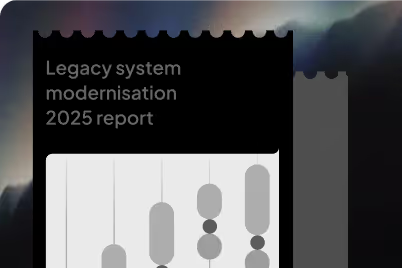Common Challenges in Offshore Software Development and How to Overcome Them

Global businesses turn to offshore development despite the challenges of offshore development to cut costs and access skilled talent worldwide. While outsourcing can save up to 60% of expenses, issues like communication barriers offshore, time zone differences, and quality control offshore often slow progress and inflate budgets.
Misaligned expectations and rework can drain resources, leaving teams frustrated and deadlines slipping. Companies that address offshore software development issues early reduce risk and improve delivery outcomes.
This guide breaks down common obstacles and shares practical ways to solve them. Momentum91 partners with businesses to make offshore projects smooth, efficient, and predictable.
1. Communication Barriers in Offshore Development Teams
Clear communication is one of the most common challenges of offshore development and can raise project costs if left unchecked. Teams face communication barriers offshore that slow delivery, cause rework, and frustrate stakeholders.
A) Language and Cultural Communication Differences
- Varying English proficiency leads to misunderstood requirements and incorrect deliverables.
- Cultural differences cause unclear feedback and misaligned expectations during reviews.
- Lack of shared terminology results in repeated clarification and wasted time.
B) Real-time Collaboration Challenges
- Limited overlap hours delay responses and stretch decision cycles.
- Asynchronous communication creates context gaps and slows progress.
- Missing documentation leads to duplicated work and extended timelines.
Solving these offshore software development issues early strengthens collaboration and prepares teams for managing time zone challenges effectively.
2. Time Zone Management and Coordination Issues
Time zone challenges remain a frequent challenge of offshore development and can slow progress if unmanaged. Poor coordination turns quick clarifications into 24-hour delays, amplifying other offshore software development issues during sprints.
A) Scheduling Conflicts and Meeting Coordination
- Teams struggle to find meeting times that overlap across regions.
- For instance, a product demo scheduled at 6 AM local time leads to rushed participation and missed details.
- Shared calendars, rotating meeting slots, and recorded sessions help ensure no one consistently bears the burden.
B) Delayed Feedback and Decision-Making Processes
- Code reviews and approvals sit idle until the next shift starts.
- Design clarifications wait hours, slowing sprint delivery.
- Async updates, short video walkthroughs, and defined response SLAs speed decisions.
Strong planning for time zone challenges helps maintain project flow and prepares teams for better quality control offshore in upcoming phases.
3. Quality Control and Assurance Challenges in Offshore Development
Maintaining quality remains a key challenge of offshore development and often leads to rework that consumes nearly half of project budgets. Many offshore software development issues arise from unclear coding standards, limited visibility, and mismatched QA processes.
A) Inconsistent Development Standards and Practices
- Offshore teams may use different frameworks or naming conventions, leading to merge conflicts.
- Example: one team uses tabs, another spaces, causing build failures.
- Shared coding guidelines, PR templates, and automated linters prevent these errors.
B) Limited Direct Oversight and Monitoring
- Managers cannot observe day-to-day progress, delaying issue detection.
- Daily code reviews, CI dashboards, and sprint demos make progress transparent.
C) Testing Environment Disparities
- QA teams may test on environments that don’t match production.
- Using containerized environments and Infrastructure-as-Code ensures parity and catches defects earlier.
A strong QA strategy reduces rework, keeps defects from slipping into production, and creates a foundation for handling data security offshore challenges next.
4. Data Security and Intellectual Property Protection Concerns
Security risks are a serious challenge of offshore development, with breaches and IP theft costing businesses millions every year. Many offshore software development issues stem from weak access controls, poor compliance, and inconsistent legal protections across countries.
A) Cross-Border Data Transfer Risks
- Moving sensitive data across regions exposes it to interception.
- Example: a finance app faced delays after failing GDPR compliance checks.
- Encrypt data in transit and rest, use VPNs, and follow approved transfer mechanisms.
B) Intellectual Property Theft and Legal Protection
- Different countries have varying IP laws, complicating enforcement.
- Use NDAs, work-for-hire agreements, and code access restrictions to secure proprietary assets.
Strong data security offshore practices protect sensitive information and prepare teams for effective offshore team management and project coordination.
5. Project Management and Team Coordination Difficulties
Managing offshore teams is another major challenge of offshore development, as traditional office-based methods often fail in distributed settings. These offshore software development issues cause misaligned expectations and unclear responsibilities if not addressed early.
A) Resource Allocation and Task Distribution
- Complex projects require clear ownership to avoid duplicated work.
- Example: two offshore teams worked on overlapping modules, causing rework.
- Use RACI charts, skill mapping, and sprint planning to assign tasks effectively.
B) Performance Monitoring and Productivity Tracking
- Managers lack visibility into daily productivity.
- Track pull request cycle times, deployment frequency, and sprint goal completion rather than hours worked.
- Regular demos and retrospectives keep progress measurable and transparent.
Strong coordination builds accountability and sets the stage for addressing hidden costs offshore before they impact budgets.
6. Hidden Costs and Budget Overruns in Offshore Projects
Budget surprises are a common challenge of offshore development, often inflating total spend by 20–30%. These offshore software development issues arise from overlooked management overhead, extended onboarding, and rework expenses.
A) Extended Onboarding and Training Expenses
- Offshore teams take longer to reach full productivity.
- Example: knowledge transfer delays kept developers at 50% output for two sprints.
- Provide structured onboarding playbooks and shadowing sessions to shorten ramp-up time.
B) Rework and Quality Correction Costs
- Quality issues lead to costly rework and schedule slips.
- Automate testing, run early code reviews, and validate requirements to avoid late-stage fixes.
Planning for these hidden costs offshore upfront keeps financial expectations realistic and sets the stage for exploring solutions with Momentum91.
How Momentum91 Can Help You Overcome Offshore Development Challenges
Momentum91 brings together deep AI, development, and design expertise to help you scale your offshore development projects quickly and efficiently.
With 8 years of experience, a global infrastructure across 25 centers and 11 cities, and a talent pool of 13,000+ experts, we deliver embedded, full-stack teams that feel like your own.
Key Strengths:
- AI-First Thinking: Innovation starts with thoughtful offshore software development issues resolution and smart automation.
- End-to-End Development: From PoC to rollouts and UX strategy.
- Embedded Product Teams: Offshore teams work as if they are onsite.
- Scalable Talent: Rapid team building through India’s strongest partner network.
Explore how Momentum91 converts offshore projects into predictable, scalable successes.
Conclusion
Common challenges of offshore development include communication gaps, time zone delays, inconsistent quality, data security risks, and hidden costs. These pain points lead to missed deadlines, expensive rework, and frustrated stakeholders.
Left unchecked, they can escalate project costs by 30% and risk product launch failures. The good news is that Momentum91 eliminates these roadblocks by embedding dedicated offshore teams, enforcing quality standards, and implementing secure, transparent project management.
With Momentum91, businesses turn offshore software development issues into predictable, efficient delivery and achieve faster time-to-market with confidence. Connect with Momentum91 today to turn your offshore development challenges into faster, predictable, and high-quality project deliveries.
FAQs
1. What are the most common challenges of offshore development in 2025?
The biggest challenges of offshore development include communication barriers, time zone challenges, inconsistent quality standards, data security concerns, and hidden costs. These offshore software development issues often lead to delays, rework, and increased budgets unless addressed early with structured processes, shared documentation, and proactive project management strategies.
2. How can communication barriers in offshore development be reduced?
Solve communication barriers offshore with clear documentation, shared glossaries, and structured collaboration tools. Schedule overlap hours, run weekly standups, and use video walkthroughs to clarify requirements. Addressing these offshore software development issues early prevents requirement drift, reduces misinterpretations, and improves overall delivery outcomes.
3. What security risks should be considered in offshore development?
Security remains a key challenge of offshore development. Businesses must protect data against breaches, secure IP through NDAs, and meet compliance for cross-border transfers. Encrypt data, use MFA, and maintain access logs. These steps safeguard sensitive information and eliminate data security offshore concerns.
4. How do time zone differences affect offshore projects?
Time zone challenges can delay reviews, slow approvals, and create long feedback loops. Plan overlapping hours, rotate meeting slots, and use asynchronous updates. This keeps projects aligned, improves delivery speed, and reduces offshore software development issues related to delayed decision-making.
5. What hidden costs can impact offshore development budgets?
Hidden costs include extended onboarding, management overhead, environment setup, and quality rework. These challenges of offshore development can inflate costs by 20–30%. Early planning, automation, and continuous QA help reduce overruns and deliver predictable results.
6. How can quality control be maintained in offshore teams?
Maintain quality by using consistent coding standards, CI/CD pipelines, automated tests, and code reviews. Mirror production environments with Infrastructure-as-Code. This minimizes defects, reduces rework, and resolves offshore software development issues before they escalate.
The inbox update you’ll never want to skip
A quick catch-up with ideas, wins, and tips worth stealing, straight to your inbox every week.
The easiest way to reach us.
Share your details and we’ll get back within 24 hours.
Blogs
A plethora of insights,all in one place
From strategy to execution. All the big ideas, practical guides & fresh perspectives that’ll help you scale with confidence
Ebooks
Comprehensive guides that break down the shifts in business and technology, Helping you lead with clarity.

Office Hours
Your direct line to our experts. Practical advice for scaling, right when you need it.

Reports
Data-backed perspectives on where industries are headed, giving you the foresight to make bolder moves.

Newsletter
A quick catch-up with ideas, wins, and tips worth stealing, straight to your inbox every week.
.avif)
Podcasts
Conversations where you get to know everything from the ones who know it best.
.avif)
Your Offshore Development Center, Done Right
Access top-tier global talent, enterprise infrastructure, and complete regulatory compliance through our proven model.
Start Now







